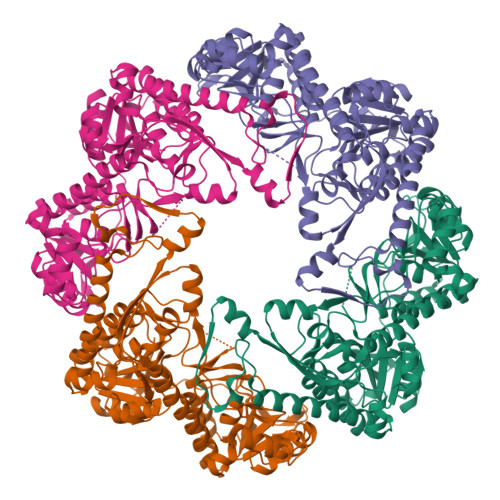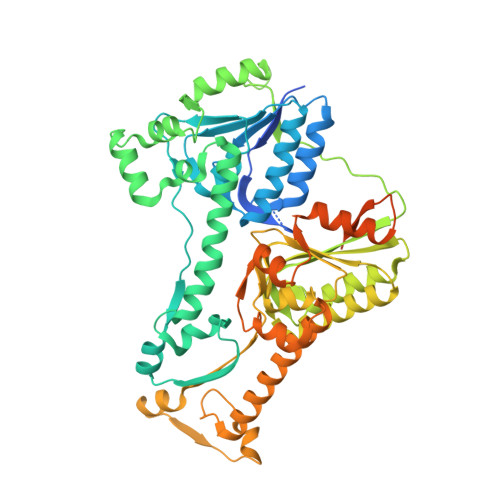Crystal structure of a bacterial signal Peptide peptidase.
Kim, A.C., Oliver, D.C., Paetzel, M.(2008) J Mol Biology 376: 352-366
- PubMed: 18164727
- DOI: https://doi.org/10.1016/j.jmb.2007.11.080
- Primary Citation of Related Structures:
3BEZ, 3BF0 - PubMed Abstract:
Signal peptide peptidase (Spp) is the enzyme responsible for cleaving the remnant signal peptides left behind in the membrane following Sec-dependent protein secretion. Spp activity appears to be present in all cell types, eukaryotic, prokaryotic and archaeal. Here we report the first structure of a signal peptide peptidase, that of the Escherichia coli SppA (SppA(EC)). SppA(EC) forms a tetrameric assembly with a novel bowl-shaped architecture. The bowl has a dramatically hydrophobic interior and contains four separate active sites that utilize a Ser/Lys catalytic dyad mechanism. Our structural analysis of SppA reveals that while in many Gram-negative bacteria as well as characterized plant variants, a tandem duplication in the protein fold creates an intact active site at the interface between the repeated domains, other species, particularly Gram-positive and archaeal organisms, encode half-size, unduplicated SppA variants that could form similar oligomers to their duplicated counterparts, but using an octamer arrangement and with the catalytic residues provided by neighboring monomers. The structure reveals a similarity in the protein fold between the domains in the periplasmic Ser/Lys protease SppA and the monomers seen in the cytoplasmic Ser/His/Asp protease ClpP. We propose that SppA may, in addition to its role in signal peptide hydrolysis, have a role in the quality assurance of periplasmic and membrane-bound proteins, similar to the role that ClpP plays for cytoplasmic proteins.
Organizational Affiliation:
Department of Molecular Biology and Biochemistry, Simon Fraser University, South Science Building, 8888 University Drive, Burnaby, British Columbia, Canada.


















